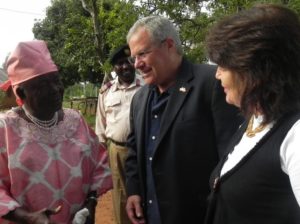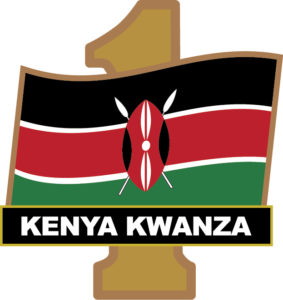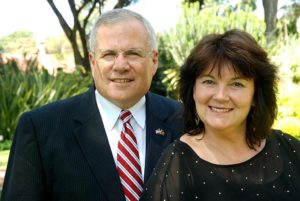 A large crowd of State Department employees and well-wishers greeted me as I entered the stately, modern three-story embassy for my first day at work.
A large crowd of State Department employees and well-wishers greeted me as I entered the stately, modern three-story embassy for my first day at work.  Two maintenance workers were at my office to help me remove my office door. As we unscrewed the last screws from the bottom hinge, I smiled and told my small audience, “Some leaders tell their subordinates, ‘my door is always open.’ I want all our employees to know I don’t even have a door.” I wanted my first message to be unmistakable and genuine—everyone was welcome to see me without discrimination if they had an issue that required my attention.
Two maintenance workers were at my office to help me remove my office door. As we unscrewed the last screws from the bottom hinge, I smiled and told my small audience, “Some leaders tell their subordinates, ‘my door is always open.’ I want all our employees to know I don’t even have a door.” I wanted my first message to be unmistakable and genuine—everyone was welcome to see me without discrimination if they had an issue that required my attention.
 On my second day in Kenya, I presented my credentials to President Mwai Kibaki in a very cordial meeting . . . it was nice to be able to converse with him in Kiswahili. Officially approved by the Government of Kenya, I went right to work as the ambassador. With Kenya’s elections and preparations for devolution (i.e., devolving political power and a share of national budget to the county governments) on the immediate horizon, I wanted to establish a solid foundation of relationships, credibility, and influence throughout the country.
On my second day in Kenya, I presented my credentials to President Mwai Kibaki in a very cordial meeting . . . it was nice to be able to converse with him in Kiswahili. Officially approved by the Government of Kenya, I went right to work as the ambassador. With Kenya’s elections and preparations for devolution (i.e., devolving political power and a share of national budget to the county governments) on the immediate horizon, I wanted to establish a solid foundation of relationships, credibility, and influence throughout the country.
 Once a month, Judy and I traveled to different parts of Kenya, usually by car to show the American flag around the countryside. I also used these trips to meet with Kenyan district leaders, civil society and community groups, and business representatives. We visited US mission activities and toured US Agency for International Development and Peace Corps projects to interact with Americans working in Kenya. These journeys gave me an opportunity to see and hear firsthand what was happening at the grassroots level. They were also great opportunities to communicate US policy objectives and to build better relationships between Kenyans, Americans, and the US Embassy.
Once a month, Judy and I traveled to different parts of Kenya, usually by car to show the American flag around the countryside. I also used these trips to meet with Kenyan district leaders, civil society and community groups, and business representatives. We visited US mission activities and toured US Agency for International Development and Peace Corps projects to interact with Americans working in Kenya. These journeys gave me an opportunity to see and hear firsthand what was happening at the grassroots level. They were also great opportunities to communicate US policy objectives and to build better relationships between Kenyans, Americans, and the US Embassy.
 On August 25, 2011, while on a road trip to Kenya’s western region, Judy and I stopped in to visit President Obama’s grandmother at Kogelo. We had a wonderful time with Mama Sarah and members of her family. While there I took a cursory look at the protective fences, entry-control points, and the small police station located near the Obama homestead. Knowing that the embassy could not expend US funds to protect a Kenyan citizen, I worked with the Kenya police to improve the overall security environment and asked the embassy’s regional security officer to evaluate what else could be done legally.
On August 25, 2011, while on a road trip to Kenya’s western region, Judy and I stopped in to visit President Obama’s grandmother at Kogelo. We had a wonderful time with Mama Sarah and members of her family. While there I took a cursory look at the protective fences, entry-control points, and the small police station located near the Obama homestead. Knowing that the embassy could not expend US funds to protect a Kenyan citizen, I worked with the Kenya police to improve the overall security environment and asked the embassy’s regional security officer to evaluate what else could be done legally.
 In October 2011, I designed a “Kenya Kwanza” (Kenya First) logo. The objective of this program was to encourage Kenyan citizens to put their country above their region, their tribe, or their wallet. The National Cohesion and Integration Commission and other organizations used lapel pins, silk-screened T-shirts, and embroidered caps with this logo in national unity campaigns. It was gratifying to watch the program catch on . . . I still see people wearing Kenya Kwanza shirts, even in small towns.
In October 2011, I designed a “Kenya Kwanza” (Kenya First) logo. The objective of this program was to encourage Kenyan citizens to put their country above their region, their tribe, or their wallet. The National Cohesion and Integration Commission and other organizations used lapel pins, silk-screened T-shirts, and embroidered caps with this logo in national unity campaigns. It was gratifying to watch the program catch on . . . I still see people wearing Kenya Kwanza shirts, even in small towns.
 As the Ambassador, I was passionate about improving healthcare in Kenya. In coordination with healthcare professionals, development policy makers, and Kenyan health officials, our Let’s Live health task force rolled out our aggressive healthcare vision to “significantly reduce preventable deaths in Kenya by tackling leading causes of mortality in a comprehensive and integrated manner.” Endorsed and supported by the Government of Kenya, the Let’s Live campaign built on prior health accomplishments in Kenya and added programs that would deliver services to hard-to-reach areas and rural communities where 60 percent of Kenyans live. The community outreach programs, facilitated by innovative communication and user-friendly information technologies, would connect more Kenyans to medical facilities and needed healthcare services.
As the Ambassador, I was passionate about improving healthcare in Kenya. In coordination with healthcare professionals, development policy makers, and Kenyan health officials, our Let’s Live health task force rolled out our aggressive healthcare vision to “significantly reduce preventable deaths in Kenya by tackling leading causes of mortality in a comprehensive and integrated manner.” Endorsed and supported by the Government of Kenya, the Let’s Live campaign built on prior health accomplishments in Kenya and added programs that would deliver services to hard-to-reach areas and rural communities where 60 percent of Kenyans live. The community outreach programs, facilitated by innovative communication and user-friendly information technologies, would connect more Kenyans to medical facilities and needed healthcare services.
 We decorated the foyer of the Ambassador’s residence with a collage of Joseph Sohm’s exceptional photographs, each prominently featuring the American flag in a different US setting. We had mounted these meaningful pictures around a 3- by 5-foot wooden flag that I had constructed with six different types of Kenyan wood. I used dark mahogany, mvuli, and teak for the red stripes and the blue field, and lighter camphor, cedar, and cypress woods for the white stripes and the flag’s frame. I called the piece, Kenya Wood – American Symbol, and believed it was a strong representation of US-Kenya partnership.
We decorated the foyer of the Ambassador’s residence with a collage of Joseph Sohm’s exceptional photographs, each prominently featuring the American flag in a different US setting. We had mounted these meaningful pictures around a 3- by 5-foot wooden flag that I had constructed with six different types of Kenyan wood. I used dark mahogany, mvuli, and teak for the red stripes and the blue field, and lighter camphor, cedar, and cypress woods for the white stripes and the flag’s frame. I called the piece, Kenya Wood – American Symbol, and believed it was a strong representation of US-Kenya partnership.
 Our 2012 US Independence Day celebration was meaningful and magnificent. Visitors, stepping out onto the back porch, were greeted by the stately trees, and green carpet lawn that enhanced the US ambassador’s residence and made it the envy of other diplomats. Off to the left was an enormous 80-foot flag, suspended between two beautiful jacaranda trees, waving gently behind the stage. Another large flag brought color and a sense of patriotism to the other side.
Our 2012 US Independence Day celebration was meaningful and magnificent. Visitors, stepping out onto the back porch, were greeted by the stately trees, and green carpet lawn that enhanced the US ambassador’s residence and made it the envy of other diplomats. Off to the left was an enormous 80-foot flag, suspended between two beautiful jacaranda trees, waving gently behind the stage. Another large flag brought color and a sense of patriotism to the other side.
 After everyone had left the Fourth of July celebration, Judy and I sat together on a wooden bench in the backyard watching the sun rest behind the American flag. As its colors dimmed to hues of grey, we reflected on the rich blessings of the past fifteen months. We had lived the special opportunity to serve the United States—the land we love. We had strengthened the US relationship with Kenya—the land of our roots. I was being forced to resign as the US Ambassador to Kenya, but I had done what I believed was right and in accordance with the president’s guidelines.
After everyone had left the Fourth of July celebration, Judy and I sat together on a wooden bench in the backyard watching the sun rest behind the American flag. As its colors dimmed to hues of grey, we reflected on the rich blessings of the past fifteen months. We had lived the special opportunity to serve the United States—the land we love. We had strengthened the US relationship with Kenya—the land of our roots. I was being forced to resign as the US Ambassador to Kenya, but I had done what I believed was right and in accordance with the president’s guidelines.
It took a couple of years to get beyond the pain, but I was finally able to forgive all the people who used lies to damage my reputation. While the scars of this event will always remain, the emotional wounds have mostly healed and my attitude is positive. As I reflect on this memoir, a few things are wonderfully obvious. God blessed me with loving parents, an awesome and beautiful wife, and a family that makes me proud. He has given me friends and colleagues that, with their support and encouragement, made me look good even in the dark times. I’m truly grateful to have served the United States as a warrior and diplomat.